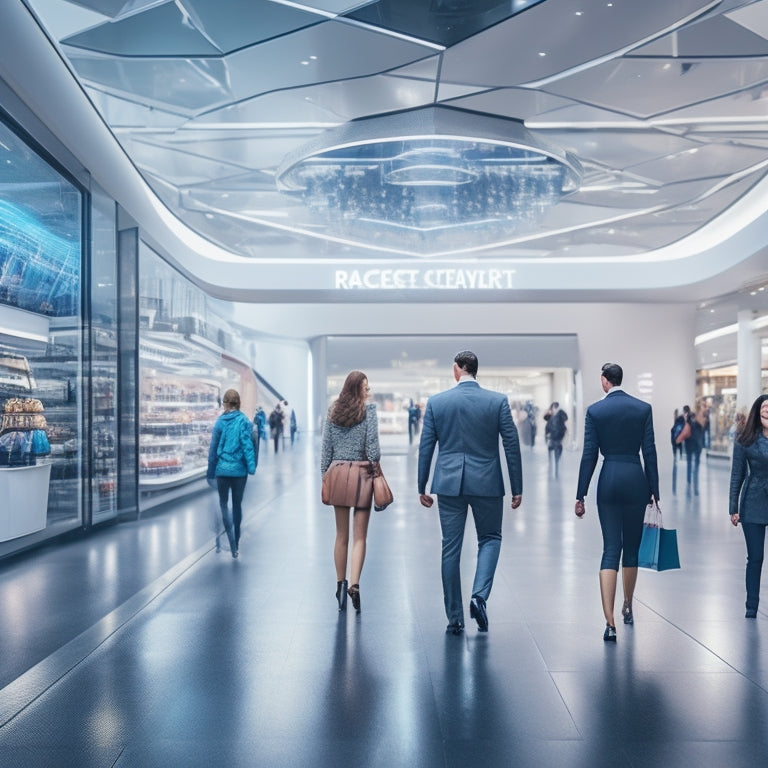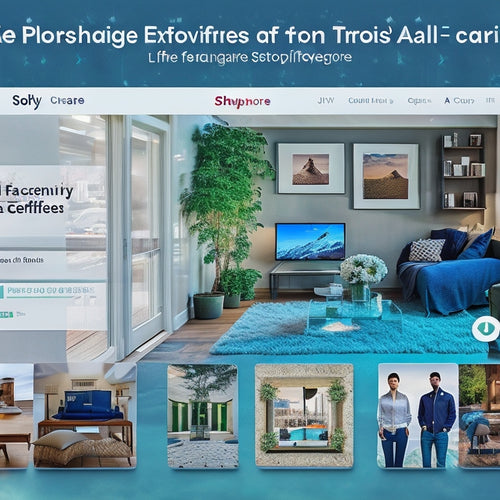
Retailers Revolutionize Customer Experiences for Success
Share
In today's retail landscape, delivering exceptional customer experiences has become the key differentiator for businesses seeking to stay ahead of the competition, as consumers increasingly expect personalized, seamless, and omnichannel interactions that meet their evolving needs and preferences. To revolutionize customer experiences, retailers must adapt swiftly to changing expectations, prioritize customer engagement, and leverage data and analytics for tailored interactions. A unified technology foundation is essential for delivering exceptional experiences, driving loyalty, and retention. By understanding the intricacies of customer behavior and preferences, retailers can craft a blueprint for success that sets them apart in a crowded market, leading to further exploration and discovery of the strategies that drive retail excellence.
Key Takeaways
• Retailers must adapt swiftly to changing customer expectations, prioritizing engagement and market trends to stay relevant in a shifting landscape.
• A unified technology foundation is essential for exceptional customer experiences, integrating front- and back-end systems for a single customer view.
• Delivering personalized experiences through data-driven insights and tailored interactions drives loyalty, retention, and ultimately, retail success.
• Omnichannel strategies enable cohesive touchpoint experiences, meeting customers where they are and providing seamless transitions between online and offline channels.
• Investing in a robust technology foundation allows retailers to stay ahead of the competition, driving innovation and revolutionizing customer experiences.
Disruptions in Retail Landscape
In recent years, the retail industry has undergone a seismic shift, with the acceleration of change attributed to the proliferation of the internet and cloud technology, which has fundamentally altered the way consumers interact with retailers.
This disruption has led to a power shift, with consumers now holding the reins. They expect instant access to information and products, and their purchasing paths have become non-linear and seamless.
Online platforms have become an essential part of consumer behavior, with customers hopping between devices and channels to research, compare, and buy.
As a result, retailers must adapt to this new landscape, embracing technology to stay relevant and meet the evolving needs of their customers.
Evolving Customer Expectations
Consumers are now dictating the terms of their retail experiences, demanding outstanding and consistent service across all touchpoints and channels. The acceleration of change in the retail landscape has led to a shift in power, with customers expecting personalized interactions and seamless experiences.
In response, retailers must prioritize customer engagement, recognizing that linear purchasing paths have been replaced by non-linear, omnichannel journeys. To meet these evolving expectations, retailers need to adapt and innovate, leveraging technology to deliver exceptional experiences that drive loyalty and advocacy.
Building a Technology Foundation
A unified technology foundation is essential for retailers to deliver exceptional customer experiences, as it enables the integration of front- and back-end systems, providing a single view of the customer and facilitating seamless interactions across all touchpoints. This foundation allows retailers to gain deeper customer insights, enabling personalized experiences that drive loyalty and retention.
| Technology Integration | Customer Insights |
|---|---|
| Unifies front- and back-end systems | Provides a single view of the customer |
| Facilitates seamless interactions | Enables personalized experiences |
| Enhances flexibility and scalability | Drives loyalty and retention |
| Supports real-time data analysis | Offers actionable customer insights |
Staying Relevant in Retail
Today's retailers face an unprecedented imperative: to adapt swiftly to changing customer expectations or risk becoming irrelevant in a rapidly evolving market.
To stay relevant, retailers must prioritize customer engagement, staying attuned to shifting market trends and consumer preferences. This requires a deep understanding of customer behavior, preferences, and values.
By leveraging data and analytics, retailers can create personalized experiences that drive loyalty and retention. Additionally, they must be agile and adaptable, responding quickly to changes in the market and consumer demands.
Blueprint for Retail Success
By prioritizing a unified technology foundation that seamlessly integrates front- and back-end operations, retailers can lay the groundwork for delivering exceptional, personalized customer experiences that drive loyalty and retention. This blueprint for retail success enables a single view of the customer, allowing for tailored interactions that foster deep engagement.
Omnichannel strategies can then be implemented to provide a cohesive experience across all touchpoints, from online to in-store. By investing in a robust technology foundation, retailers can adapt to shifting customer expectations and stay ahead of the competition.
With flexibility and scalability built-in, they can pivot quickly to capitalize on new opportunities and trends, ensuring long-term success in an ever-evolving retail landscape.
Frequently Asked Questions
How Do Retailers Measure the Success of Their Customer Experience Strategies?
As the ancient Greek aphorism "know thy customer" goes, retailers measure the success of their customer experience strategies through multifaceted approaches, including customer feedback analysis, customer loyalty programs, mystery shopping evaluations, and social media sentiment tracking.
What Role Do Employee Experiences Play in Delivering Customer Satisfaction?
Employee experiences greatly impact customer satisfaction, as engaged and adequately trained employees are more likely to provide exceptional service, driving loyalty and retention, highlighting the importance of investing in employee engagement and training programs.
Can Traditional Brick-And-Mortar Stores Compete With E-Commerce Giants?
Traditional brick-and-mortar stores can compete with e-commerce giants by leveraging in-store technology and omnichannel strategies, creating seamless shopping experiences that bridge online and offline channels, ultimately driving customer loyalty and retention.
How Do Retailers Balance Personalization With Customer Data Privacy Concerns?
"Did you know 71% of consumers feel frustrated when their experience is impersonal? To balance personalization with data privacy, retailers must prioritize data protection, adhering to privacy regulations while employing customization and tailored marketing strategies that respect customers' boundaries."
What Metrics Should Retailers Use to Gauge Customer Experience Effectiveness?
To measure customer experience effectiveness, retailers should track metrics such as customer feedback, user engagement, net promoter score, and customer retention rates, providing a detailed view of customer satisfaction and loyalty.
Related Posts
-
Maximizing Tiktok's Potential On Shopify
TikTok has rapidly emerged as a powerful platform for businesses to connect with their target audience and drive sale...
-

Which SEO App Is Best for Shopify
This article aims to provide an objective analysis of the best SEO app for Shopify, catering to the needs of individ...
-

Why Is Shopify SEO Important
This article examines the importance of Shopify SEO. It discusses the benefits of optimizing SEO on Shopify, provide...

